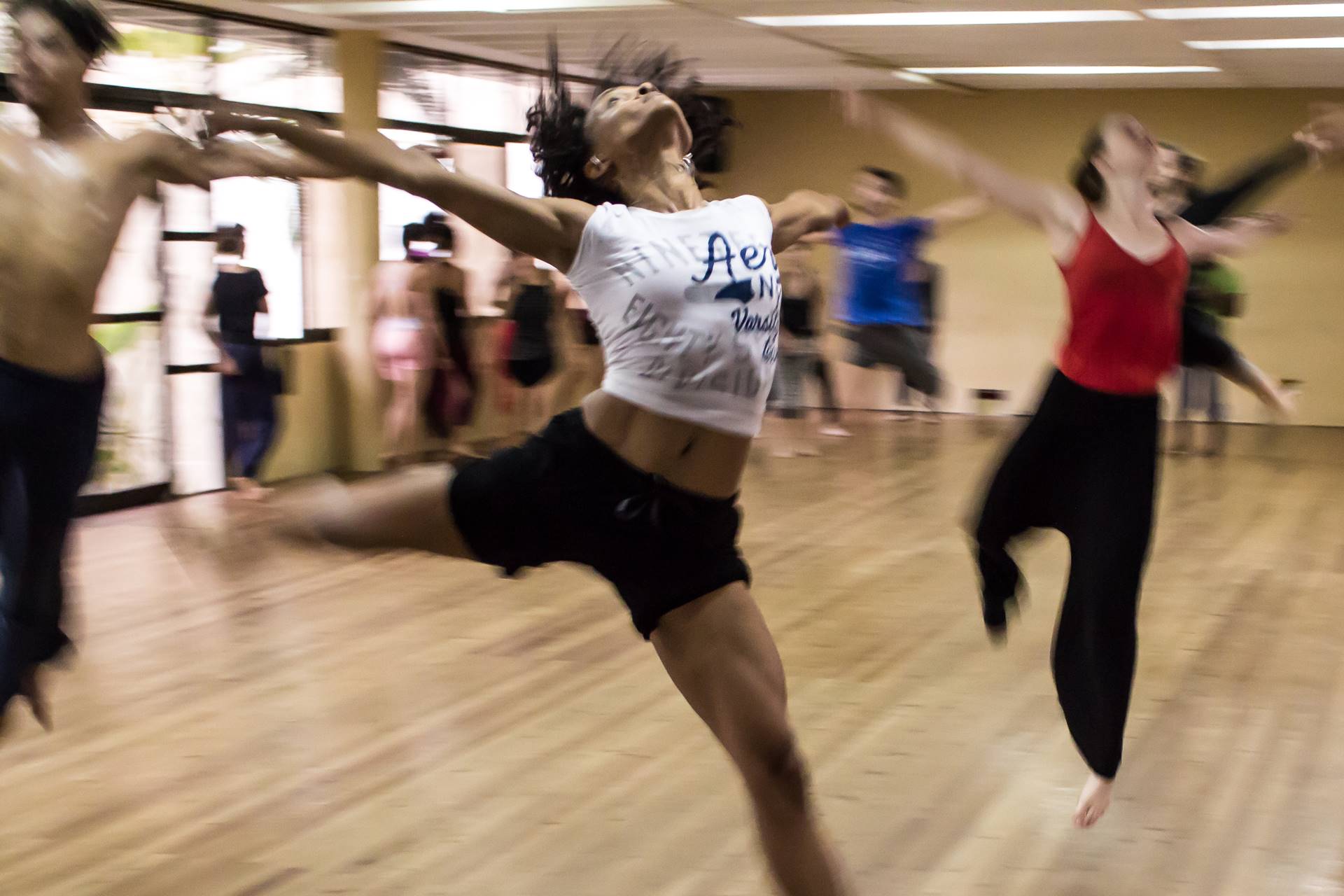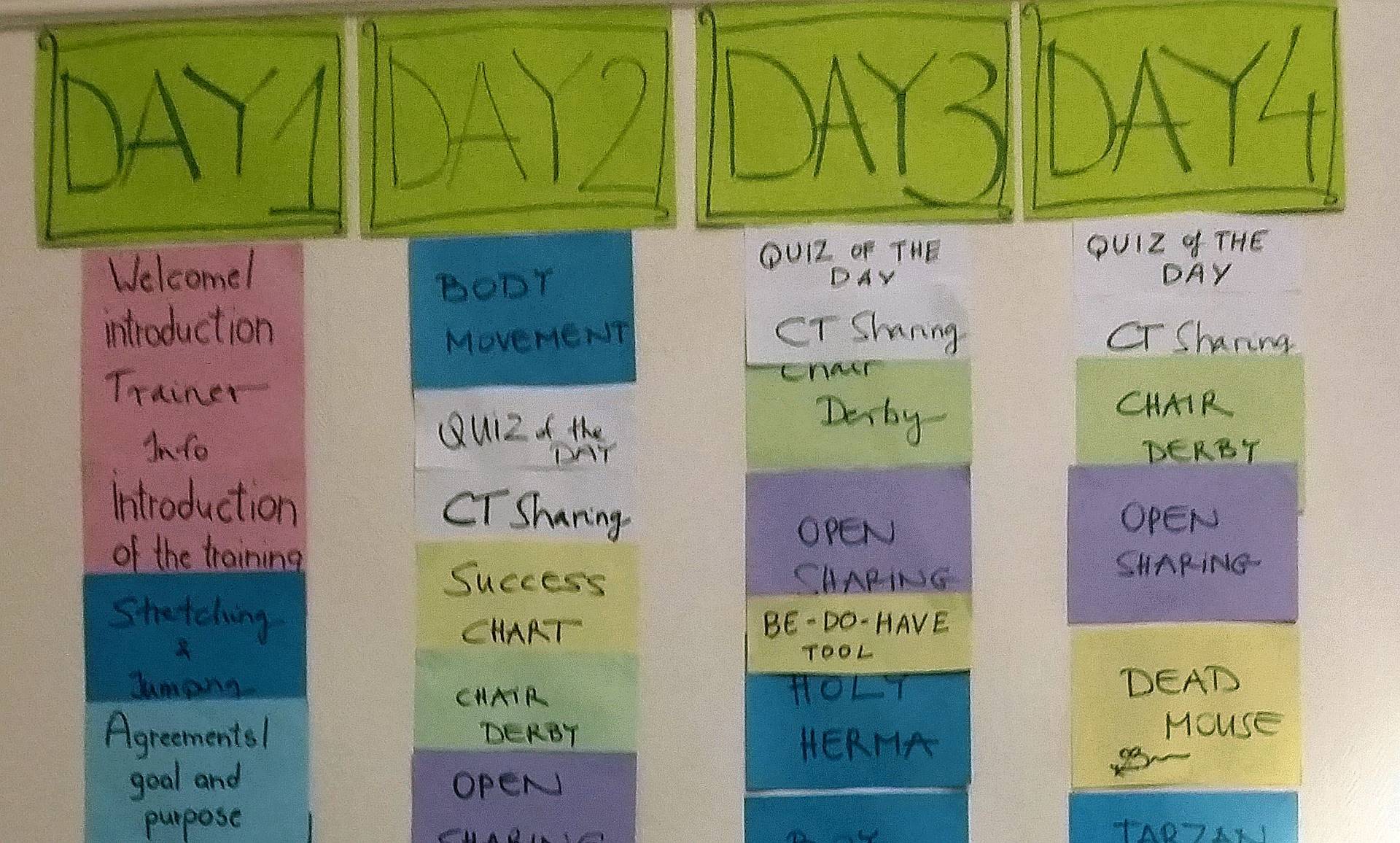TRAINING
How to run a training for large international groups – a practical guide
MONIKA CHMURA / TRAINER
Running a training is always a big logistical challenge. What should you pay special attention to if you organize training for an international group of more than 40 people? We have gathered the most important guidelines according to us based on our experience of participating in training provided under the Erasmus + program.
First – space
Take care of the space where everyone can meet. Preferably away from the city, close to nature, to allow some of the exercises to be designed and carried out in the open air. Room should be adjusted to the size of the group. Ideally, if there is a possibility of flexible adaptation depending on the type of activities involved – for example, changing the layout of chairs or removing them from the room.
Take care of the sound system for the trainers – with some exercises, the microphone can be helpful. Our discovery is to create a soundtrack for the training. As it turned out, the musical setting of the training is extremely important and can become part of the whole learning process.
Secondly – a team of trainers
With such a large group of participants ideally if the trainers are working in a couple and are supported by a group of co-trainers (assisting trainers). The task of the trainers is to conduct all training, including lectures and group exercises. The role of assisting trainers is to carry out exercises in smaller groups.
The leading trainer is not responsible for the whole learning process but is also a leader of the trainers team. He takes care of the time frame, collects information from assisting trainers, supports, provides feedback, checks before and after the end of the training day. And builds a training team where everyone knows and identifies with the goals of the training, understands their role in the team, and feels responsible for the final training effect.

Take care of the space where everyone can meet
Third – the frames
The large and multinational training group is extremely interesting and colorful. Keep in mind that participants will have different approaches to punctuality, or different approaches to adhering to the rules imposed by the trainers. How under such conditions to maintain proper tempo and structure of the training? A well-prepared and well-trained training plan, known to all members of the training team, is the basis of success.
In addition, it is important to write rules in the form of a contract that can be distributed to participants at the beginning of the training. This will bring order to structure, give frames in which everyone will be able to move.
Fourth – empowerment
Which means creating a space where the participant himself becomes responsible for his own learning process. During the various training situations learns to regain influence over a situation by using the resources he possesses – his knowledge, skills and experience.
The trainer does not provide ready-made solutions, but allows each participant to find the best solution for himself. Applying this principle in practice makes everyone empowered, not only during training, but, importantly, brings that skill to life in the day-to-day life.
“Our discovery is to create a soundtrack for the training. As it turned out, the musical setting of the training is extremely important and can become part of the whole learning process.”
What tools and methods can by used to achieve that effect? First of all, by using coaching methods and techniques: asking questions, following up, giving constructive feedback. We also encourage you to work with the victim-accountability chart, which has been described in the article How to get out of the victim’s position and regain control of the situation?
Fifth – communication
In the case of training, which each participant speaks in another language, it is obvious that the working language will be English. It is important before the training to find out what the level of language knowledge is by the individual participants. To ensure that people who do not communicate sufficiently freely in English, provide a translator.

A well-prepared and well-trained training plan, known to all members of the training team, is the basis of success
Sixth, learning by experience
Plan your training or workshop in accordance with the Confucian principle: “Tell me, and I will forget. Show me, and I may remember. Involve me, and I will understand”. The most effective way of learning is learning through experience. Plan training exercises so that participants have the opportunity not only to experiment, to experience and to experiment but also to transfer their skills and knowledge into everyday situations.
And finally – intercultural evenings
Training for diverse nationalities brings a great deal of added value. It means sharing of culture, history, traditions and cuisine. Create opportunities to get to know the participants well in the intervals between the training assignments. Organize a joint trip to interesting places or a regional cuisine show or provide space for joint cooking.

This article was produced as a result of the “Competence Improvement Program”, implemented by the Innovation Development Foundation.
Project is co-financed by the European Union Erasmus + (Action 1 Educational Mobility, Mobility of Adult Education Staff, Agreement number 2016-1-PL01-KA104-025815).
This project has been funded with support from the European Commission. This publication reflects the views only of the author, and the Commission cannot be held responsible for any use which may be made of the information contained therein.
License CC BY-SA
BLOG Development Support Foundation Innovator is licensed under a Creative Commons Attribution-ShareAlike 4.0 License We kindly ask you to quote the author of the entry explicitly and the source: "The text is from the blog of the Development Support Foundation Innovator and is located at [link to the relevant entry] Author of the text: [name surname]".
The CC-BY-SA license is excluded from the logo of the Foundation, to which all rights are reserved.



